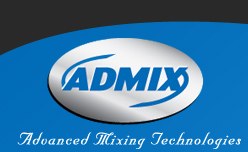
Flavors - Find Your Mixer
Welcome to our technical support forum…
"Ask Our Mixing Gurus"!

Presented by:
Larry Reeves, Applications Engineering Manager
Flavors are key to our enjoyment of food and beverages, whether naturally occurring or added as ingredients. Flavor ingredients may take many forms including liquids, solids and gases. We commonly think of flavors as tasted by the tongue, but most of what we sense as flavor is actually aroma, a stimulation of our olfactory receptors in the nasal cavity. The "taste buds" on the tongue do play a role in sensing sweet, sour, salt and bitter sensations, but flavors and aromas are much more complex. Color, temperature and texture also play roles in our flavor perception.
"Natural flavors" are those that occur naturally in foods or are produced during normal food preparation processes such as cooking. "Artificial flavors" are flavoring substances extracted from natural sources or created in the laboratory, and added as ingredients to enhance flavor. They may be "nature identical" or completely original.
Most of the flavor ingredients used by the food industry are either dry powders or liquids of various descriptions. The liquids include concentrates, extracts and essences. Concentrates typically have water removed by filtration or evaporation, leaving a more viscous "concentrated" juice. Extract implies a purification of a desirable component of the juice, by removing some material (such as sugars, starch & fiber). Essences are the volatile aromas that may evaporate during juice concentration, but can be captured and added back to enhance the flavor profile.
Flavor ingredients can be water soluble, but they are often oils that don't mix with water and have to be emulsified as a stable suspension in water or dissolved in an organic solvent like alcohol or propylene glycol. Flavor oil in water emulsions are very common in liquid flavor products as well as a necessary step in spray-dried powders.
Producing a stable emulsion is not easy. Variables include the density of the material, the desired size of the oil droplet and the stabilizing system. The oil phase must be mixed with the immiscible water phase using high shear to form the correct droplet diameter. The density may need to be adjusted using other ingredients and a gum may be added to stabilize the droplets by coating them and increasing the water phase viscosity. Poor quality emulsions break down forming neck rings, sediment and creaming in finished food products.
Admix can help provide solutions to these mixing challenges. Our high shear Rotosolver top entry mixers are widely used to disperse mixtures for direct application or prior to homogenization for spray drying. The Admix VacuShear system can make batches quickly with no foam and minimum dissolved air to prevent oxidation of flavor oils. The Fastfeed system can introduce and disperse powders or flavor oil inline.
Rotosolver, Rotostat and DynaShear will produce flavor emulsions down to 3-5 microns. The Boston Shearmill will produce emulsions down to 0.5 microns.
Bring us your mixing challenges, and we will recommend creative solutions...Please contact our application engineers at 800.466.2369 or email us at